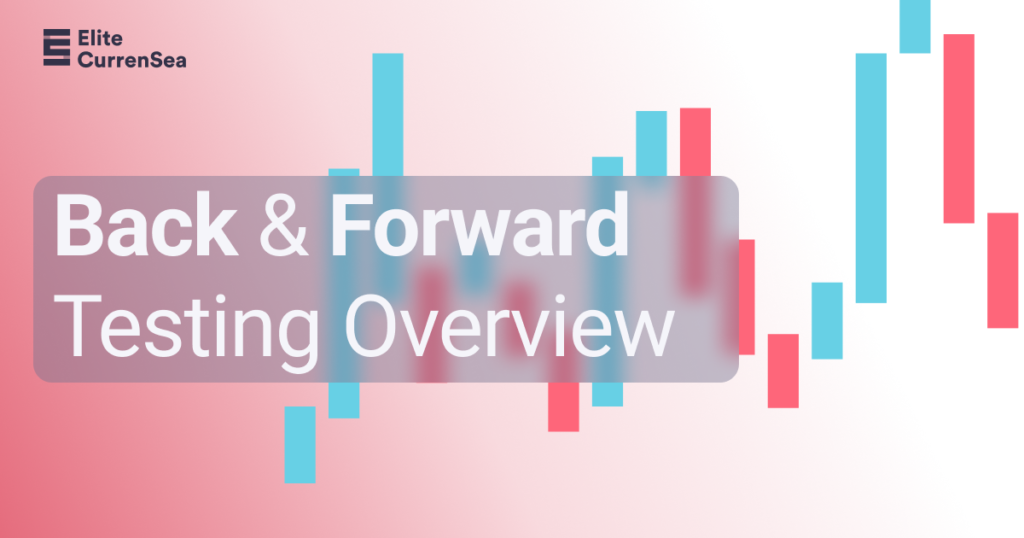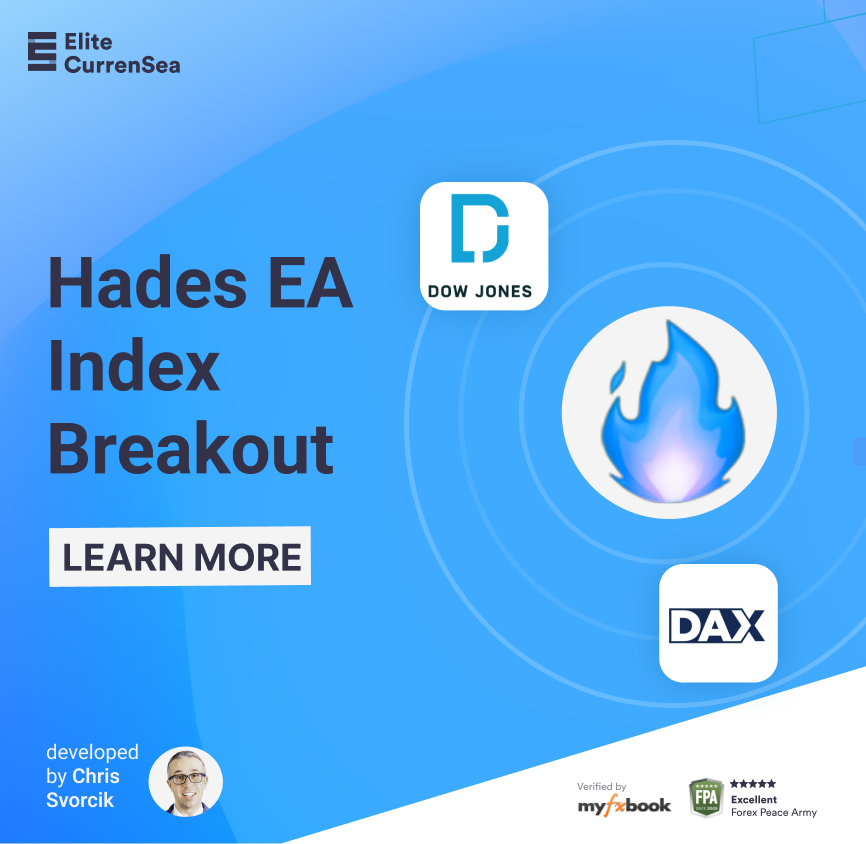Forward Testing and Backtesting in Forex: An In-Depth Guide

Forex trading is a complicated endeavor that requires skill, knowledge, and practice. One of the most important aspects of successful forex trading is understanding how to properly combine forward testing and backtesting techniques.
This article will provide an in-depth look at forward testing and backtesting in the forex market, explaining why they are essential tools for successful trading.
Outline:
- What is Forward testing?
- What is Backtesting?
- How to Use Forward Testing and Backtesting Together
- The Advantages of Combining Forwardtesting and Backtesting
- Conclusion
What is Forward Testing?
Forward testing is the practice of simulating trades in the forex market using live data. This allows traders to test their strategies on actual market conditions before trading with real money.
Traders can analyze the results of their forward tests by looking at statistics such as the trading range, number of winners, drawdown level, and more.
Forward testing in forex is the process of simulating trades using live market data. This allows traders to test their strategies on actual market conditions before trading with real money. Forward testing can be an important tool for successful forex trading, as it can help traders assess the potential profitability of their strategies and identify any potential flaws.
There are a number of different ways to forward-test a forex strategy. One popular method is to use a demo account with a broker that offers live market data.
This allows traders to place trades on real-time prices and see how their strategy would have performed under actual market conditions. Another common method is to use historical data to simulate trades.
This approach can be useful for testing longer-term strategies or for backtesting a strategy that has already been implemented in the live market.
When forward testing a strategy, it is important to pay close attention to the results. Look for statistics such as the trading range, number of winners, drawdown level, and more.
These metrics can give you valuable insights into the performance of your strategy and help you identify any potential flaws. With careful forward testing, you can gain confidence in your strategy and make sure that it is ready for live trading.
What is Backtesting?
Backtesting is the practice of testing a trading strategy on historical market data. This involves running a trading system over historical market data to see how it would have performed in the past. Backtesting can be done manually, by going through all of the historical data and evaluating each trade, or by using an automated backtesting system.
One of the main benefits of forex backtesting is that it allows traders to test out their strategies in realistic market conditions without risking any capital.
This helps traders identify potential problems with their strategies before investing real money. Backtesting also gives traders an indication of how a strategy might perform in different market conditions and whether it could be profitable in varying scenarios.
When backtesting, it is important to use reliable and accurate historical data. Since most forex brokers don’t offer this data, traders may need to acquire this from third-party sources or find another broker that offers reliable information.
It is also important to ensure that the data used for backtesting reflects current trading conditions as accurately as possible since older data may not reflect current market dynamics.
Once a trader has access to reliable historical data, they can begin setting up their backtest parameters such as the time frame, currency pair, and risk tolerance for their trades.
They should then adjust these settings according to their individual trading strategies and run the test until complete.
After completing the test, traders will be able to review various metrics such as average drawdown levels, profit/loss ratios, win percentages, and more to evaluate how successful their strategy was over time.
Backtesting Drawbacks and Pitfalls
Backtesting can be a useful tool for developing and testing trading strategies, but there are several disadvantages to consider as well.
One issue is that backtesting results can be biased if the data used is not representative of actual market conditions.
Furthermore, backtesting does not account for slippage or transaction costs, which can eat into profits in live trading.
Another potential issue is curve-fitting, which occurs when a trading strategy is optimized too closely to historical data, leading to over-optimization and poor performance in live trading.
Backtesting also cannot account for all variables that affect markets such as news events, economic indicators and political changes that may occur after the backtest has been run.
How to access relevant backtesting data?
In order to minimize these pitfalls when using automated forex trading systems, it’s important to use reliable historical data that accurately reflects current market conditions.
There are various ways to obtain reliable historical data for forex backtesting. One way is to use a broker that provides historical data.
Another way is to use a data service that specializes in providing historical forex data.
Finally, some trading platforms like MetaTrader 4 and NinjaTrader 8 offer built-in historical data that can be used for backtesting purposes.
- FXCM Historical Data Center
- MetaTrader 4 Historical Data
- MetaTrader 5 Historical Data
- NinjaTrader 8 Historical Data
Some brokers charge for access to their historical data, while others include it for free with an account, but there are a few different data services that provide historical forex data.
One popular option is FXCM’s Historical Data Center, which provides up to ten years of historical data for select currency pairs.
These services typically offer data in CSV format, which can be imported into most backtesting software platforms.
Finally, some trading platforms like MetaTrader 4, MetaTrader 5 and NinjaTrader 8 offer built-in historical data that can be used for backtesting purposes.
This data is typically of high quality and granularity, making it ideal for testing strategies on different timeframes.
Additionally, using built-in platform data eliminates the need to pay for a separate data service or worry about importing CSV files.
NinjaTrader 8 for instance, is another popular platform among forex traders due to its advanced backtesting capabilities and automated trading features. NinjaTrader 8 supports multiple markets including stocks, futures, and forex markets allowing for portfolio-level analysis and risk management.
While the platform itself is paid, users get access to unlimited free simulated backtests which are great for testing out strategies without risking real money in the market.
NinjaTrader also offers built-in analysis tools like Strategy Analyzer which can be used to analyze strategy performance across multiple instruments in both backtest and real-time trading environments.
Make sure to avoid data-mining bias, which occurs when historical data is used to fit the strategy too closely.
This leads to overfitting of parameters and poor performance in live trading as the market conditions have changed since the backtest was conducted.
it when hunting for data for your backtesting.
Forward Testing
Forward testing involves simulating trades in the forex market using live data to evaluate various metrics such as profit/loss ratios, drawdown levels, win percentages, and more.
This provides traders with valuable insight into how their strategies will perform under actual market conditions, allowing them to make smarter trading decisions overall.
It also allows them to test out different parameters such as time frames, currency pairs, risk tolerances, etc., without risking any capital which can help them determine what works best for them before making any real money trades.
By adding forward testing to backtesting, traders can gain an accurate understanding of their strategies in both live and historical market conditions which helps them optimize their strategies for higher profitability and smarter trading decisions overall.
How to Use Forward Testing and Backtesting Together
The best way to use forward testing and backtesting together is to apply both techniques simultaneously. By first testing a strategy on historical data with backtesting, traders can understand how their strategy works under different market conditions.
Once traders have a good understanding of how their strategy works, they can then use forward testing to refine their strategies further and ensure that their strategies are successful in the live markets.
When combining forward testing and backtesting, it is important to use both techniques simultaneously. This ensures that traders gain an accurate understanding of their trading strategies in both live and historical market conditions.
To start, traders should use backtesting to analyze how a strategy works under different market conditions in the past.
Backtesting involves running a trading system over historical data to assess how it would have performed in the past.
This helps traders identify potential problems with their strategies before investing real money into them.
When backtesting, it is important to use reliable and accurate historical data from third-party sources or from a broker that offers reliable information.
Provided the data used for backtesting reflects current trading conditions as accurately as possible you can now perform forward testing on live market data to further refine their strategies and assess how successful they might be in real-world trading scenarios.
The Advantages of Combining Forward testing and Backtesting
Combining forward testing and backtesting offers numerous advantages for traders. By combining both techniques, traders can gain a better understanding of how their strategies will perform in the live markets and make appropriate adjustments before trading with real money.
Additionally, forward testing and backtesting can provide traders with valuable insights into market conditions that are not always visible on historical data.
While, backtesting does not account for slippage, transaction costs or commissions, which can all have an impact on profits in real time trading, forward testing can mitigate some of these drawbacks.
Important Steps and Limitations
In general, traders should diversify their strategies by including a variety of different indicators and varying risk levels according to market volatility.
It’s also important to test any strategy on a demo account before going live in order to properly assess its effectiveness in real-time markets.
Finally, traders should always be aware of the limitations of backtesting and make sure they are taking into consideration all variables that could affect their trades in live markets.
Automated Trading Backtesting Rules of Thumb
- When using a broker for backtesting, it’s important to make sure that the broker offers high-quality historical data.
- The data should be tick-by-tick with no gaps in order to get an accurate picture of market conditions.
- Furthermore, the data should be as granular as possible in order to test strategies on different timeframes.
A main potential issue with backtesting is curve-fitting or optimization bias.
This occurs when traders adjust their strategies too closely to past performance while ignoring future results.
This could lead to overoptimization and lead to reduced profitability due to changing market conditions.
Final Words
Another potential issue with backtesting is curve-fitting or optimization bias. This occurs when traders adjust their strategies too closely to past performance while ignoring future results.
This could lead to overoptimization and lead to reduced profitability due to changing market conditions.
Conclusion:
Forwardtesting and backtesting are essential tools for successful forex trading. By combining both techniques, traders can get a better understanding of how their strategies will perform in the live markets and make appropriate adjustments before trading with real money.
Additionally, forward testing and backtesting can provide valuable insights into market conditions that are not always visible on historical data. Ultimately, using both techniques together is the best way to ensure success in the forex market.
Start trading with confidence by using forward testing and backtesting!
For more information on how to employ these tools effectively, contact our team of experts stuff.
Safe Trading
Team of Elite CurrenSea 🇺🇦❤️








Leave a Reply